4.1 Kitchen Equipment
Foodservice production systems (as discussed in Chapter 2) require a variety of commercial kitchen equipment in order to facilitate production. This section will provide an overview of common commercial kitchen equipment.
Examples of common equipment used in commercial food service production
Text Description
Ranges combine a stovetop cooking surface, which could be an open flame or solid griddle surface, and an oven.
Walk-in Cooler is a large, enclosed, insulated and refrigerated storage space. Most facilities will have walk-in coolers and walk-in freezers.
Rational iCombi Oven functions as a steamer, convection or conventional oven. The unit is fully sealed so the humidity levels, air speed and temperature can be controlled during cooking. This oven has a computer interface which allows cooking programs to be preset. For example, a preset could be set up for cooking Creme Brule.
Steamers use high-temperature steam as the cooking method for foods. Great for cooking vegetables quickly.
Convection Ovens use a fan-forced hot air circulation to decrease the required cooking time and promote consistent, even heat distribution.
Stand Mixers have a large capacity bowl and different attachments, whisk, paddle and dough hook that can be used to mix large quantities of doughs, mousses, and puddings.
Conveyor Dishwashers allow multiple racks of dishes to be washed and sanitized efficiently.
Ice Machines make ice cubes.
Meat Slicer used to slice meats and cheeses.
Blixer used to texturize foods.
Steam Table provides heat to keep hot foods hot for service.
Examples of common equipment used in commercial food service production
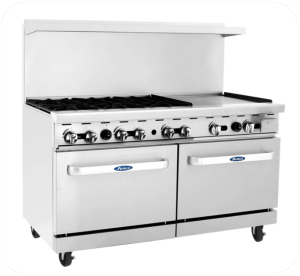
Ranges combine a stovetop cooking surface, which could be an open flame or solid griddle surface, and an oven.
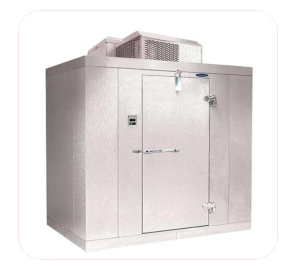
Walk-in Cooler is a large, enclosed, insulated and refrigerated storage space. Most facilities will have walk-in coolers and walk-in freezers.
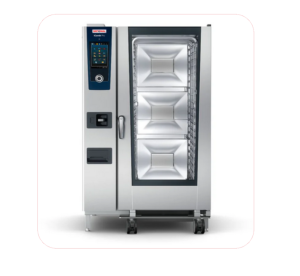
Rational iCombi Oven functions as a steamer, convection or conventional oven. The unit is fully sealed so the humidity levels, air speed and temperature can be controlled during cooking. This oven has a computer interface which allows cooking programs to be preset. For example, a preset could be set up for cooking Creme Brule.
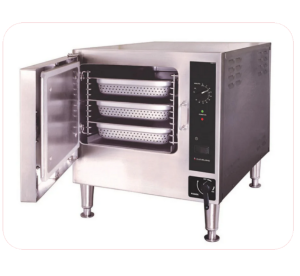
Steamers use high-temperature steam as the cooking method for foods. Great for cooking vegetables quickly.
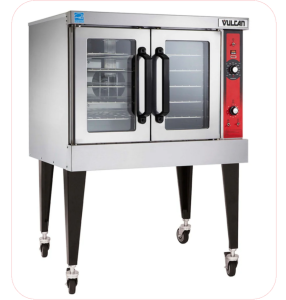
Convection Ovens use a fan-forced hot air circulation to decrease the required cooking time and promote consistent, even heat distribution.
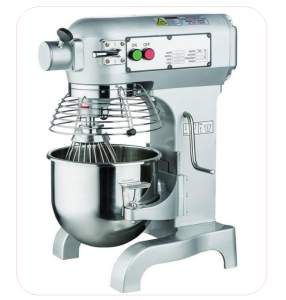
Stand Mixers have a large capacity bowl and different attachments, whisk, paddle and dough hook that can be used to mix large quantities of doughs, mousses, and puddings.
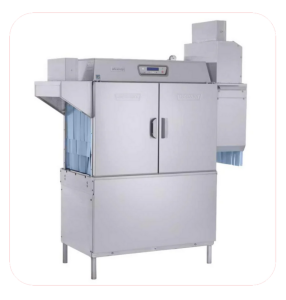
Conveyor Dishwashers allow multiple racks of dishes to be washed and sanitized efficiently.
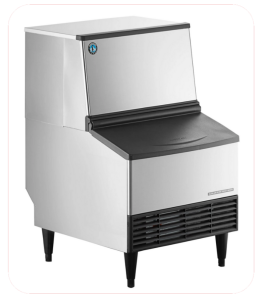
Ice Machines make ice cubes.
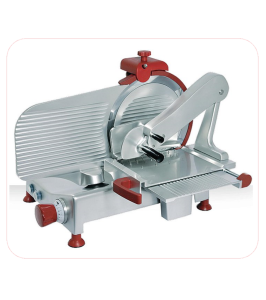
Meat Slicer used to slice meats and cheeses.
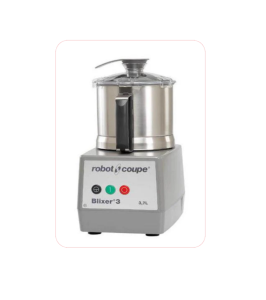
Blixer used to texturize foods.
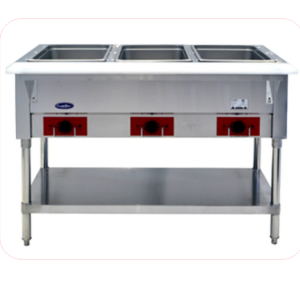
Steam Table provides heat to keep hot foods hot for service.
All images from Nella and used under Fair Dealing unless otherwise indicated.
Standard Operating Procedures (SOPs)
Standard Operating Procedures (SOPs) provide staff with step-by-step directions on how to safely and efficiently operate the equipment. It is useful to include the SOP in the preventative maintenance plan because it serves as a communication tool for staff training. Having written documentation of SOPs supports the facilities management goals of safety, cleanliness, and maintenance. Staff training on SOPs reduces workplace injuries and accidents, which in turn supports business continuity and quality service.
Example of SOP for Stand Mixer
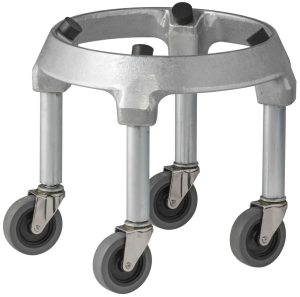
- Follow capacity charts to avoid overfilling the mixing bowl.
- Minimize heavy loads by using bowl trucks to move the mixer bowl from the prep area to the mixer. If the mixer bowl is heavy, 2 workers must lift the bowl.
- Ensure the mixer is turned off. Lift bowl. Line up the shaft pin. Lock the bowl in place with clamps.
- Add the attachment (whisk, paddle, dough hook). Line up the agitator slot and push upwards and clockwise into place.
- Lift the bowl into a locked position. Move the guard into a locked position.
- ALWAYS start the mixer on LOW speed.
- Do not open the guard until the mixture has come to a complete STOP.
- Open the guard and lower the bowl.
- Remove the attachment before removing the bowl.
Watch: Globe Mixers Instructional Video
Video: “Globe Mixers (10 to 80 Qt) Instructional Video” by GlobeFoodEquip [15:57] is licensed under the Standard YouTube License. Transcript and closed captions are available on YouTube.

